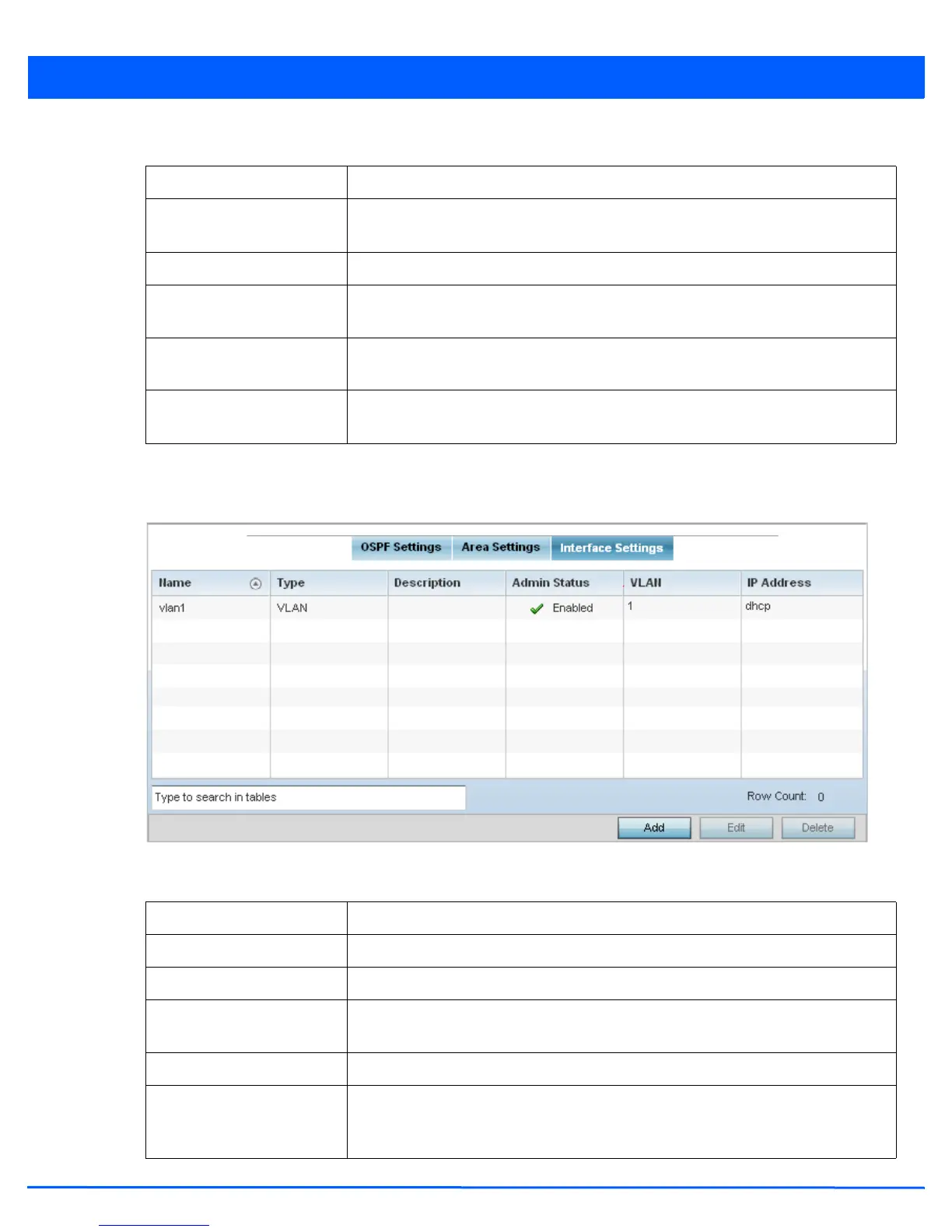Device Configuration 5 - 83
14. Set the OSPF Area configuration.
15. Select the OK button to save the changes to the area configuration. Select Reset to revert to the last saved configuration.
16. Select the Interface Settings tab.
Figure 5-45 Network - Interface Settings tab
17. Review existing Interface Settings using:
Area ID Use the drop-down menu and specify either an IP address or Integer for the OSPF area.
Authentication Type Select either None, simple-password or message-digest as credential validation
scheme used with the OSPF dynamic route. The default setting is None.
Type Set the OSPF area type as either stub, totally-stub, nssa, totally-nssa or non-stub.
Default Cost Select this option to set the default summary cost advertised if creating a stub. Set a
value from 1 - 16, 777,215.
Translate Type Define how messages are translated. Options include translate-candidate,
translate-always and translate-never. The default setting is translate-candidate.
Range Specify a range of addresses for routes matching address/mask for OSPF
summarization.
Name Displays the name defined for the interface configuration.
Type Displays the type of interface.
Description Lists each interface’s 32 character maximum description.
Admin Status A green check mark defines the interface as active and currently enabled with the
profile. A red “X” defines the interface as currently disabled and not available for use.
VLAN Lists the VLAN IDs set for each listed OSPF route virtual interface.
IP Address Displays the IP addresses defined as virtual interfaces for dynamic OSPF routes. Zero
config and DHCP can be used to generate route addresses, or a primary and secondary
address can be manually provided.

